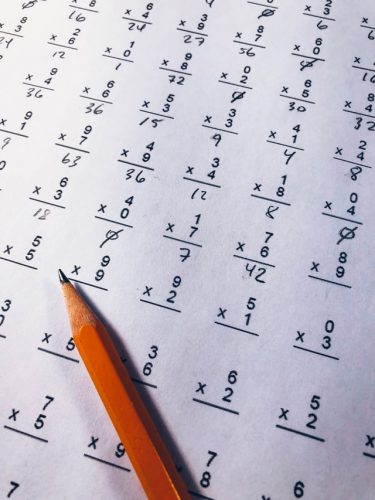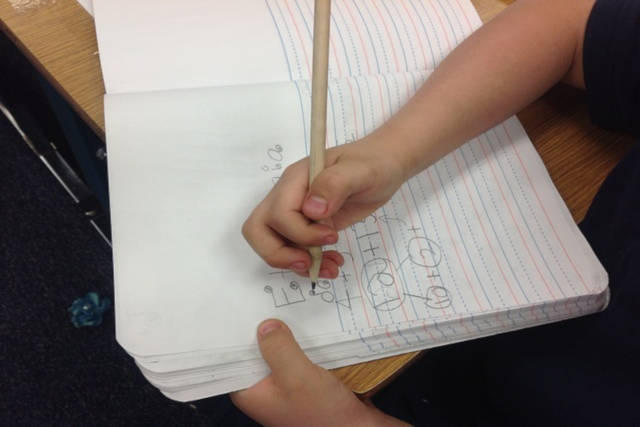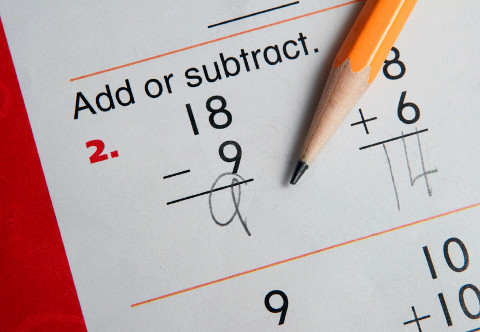A child may start with healthy progress in Mathematics classes in Primary 1 and 2, but began to show signs of struggle in Primary 3. The child’s work is strewn with seemingly careless mistakes and by Primary 5, the child can barely understand any of the concepts taught.

This is the nightmarish scenario that parents fear and many are facing. Some tried to seek extra help by sending the child for tuition, but the situation doesn’t seem to be improving.
⇒ Related Read: Why Can’t My Child Solve Difficult PSLE Math Problem Sums
Academic Debt
The maths syllabus is designed in a spiral nature, where students revisit a topic every year to learn concepts in greater depth. In Primary 1 and 2, they learn number bonds, which is the adding and subtracting simple numbers, and then relate this to multiplication and division.

By Primary 3, they learn the full multiplication tables from 1 to 10 and then apply them to concepts like long division, multiplication of 2-digit numbers and fractions. In Primary 4, fraction concepts get linked to the decimal system, and then to ratio and percentage in Primary 5.
So, when a child does not fully master the concepts at the more basic levels, the child incurs an academic debt. And just like how credit card debts can balloon when they are not serviced promptly, all the misconceptions that are not fully learnt will result in increasing difficulty in understanding more advanced concepts later on.
Even more terrifying, this academic debt will continue to snowball as the child progresses to secondary education and beyond.
Why is my child still struggling even with tuition?
Sending the child to tuition classes may not be sufficient if this is the case. The teachers in school and tuition classes are constrained by classroom time, which must be used to work on current topics and concepts.
They are unable to devote time to reteach past-year topics in their entirety. So, the cracks are not mended and the child continues to struggle with the advanced contents.
Just like in sports, attending a weekly 2-hour training session with a coach is insufficient for an athlete. While the athlete and the coach fine-tune techniques and race strategies during coaching sessions, the athlete must, on their own, continue to run or do weights workouts to build stamina, endurance and strength.
Without this, all the inputs by the coach may not be effective at all.
Repaying the debt
Different children have different degrees of academic debt. The first thing to do is to trace the root of misconceptions and work on them. Some may need remediation on something as basic as the number bonds, while others are lost in more complicated concepts such as fractions.
Use diagnostic tests
Simple diagnostics can be used to identify a child’s areas of weakness. This is easily done by getting the child to do questions from past year’s topics.
Let’s say your child got the fraction questions wrong in a recent test but is still unable to get them right on the second try with you, look for a few questions in the textbooks, workbooks, class worksheets or even the exam and test papers from the previous year.

If these past year questions (and maybe even the year before) are also answered incorrectly, then this simply means repair and remediation are needed for that topic from that level.
Where to start
One of the most important and critical tasks a child must master to do well in maths is to be fluent in the multiplication table from 1 to 10. Otherwise, he or she will soon find it very hard to see how two fractions are related, or identify the common multiples or factors linking given ratios to manipulate figures and solve maths problems for instance.
Many topics in the primary curriculum center on the concept of proportion. If I have 1 and you have 3, then when I have 4, you must have 12. This is an underlying principle when calculating fraction, percentage, ratio and rates.

One telltale sign that a child is not up to par is if he or she still counts fingers to add or takes a long time to find the answer to 8 x 6. Also, a child can confidently say 3 x 7 is 21 but will take longer to find the answer to 7 x 3.
Being creative (and fun!)
It is quite tortuous for the child and time-consuming for the parents to sit down together and specifically recite the multiplication table or the number bonds. Time, or a lack of it due to work or other commitments, is a reason why parents engage in additional help after all.
So, just like how it is not very healthy to be a weekend warrior when it comes to sports, it is better to improve numeracy in frequent but shorter intervals. 1 or 2 sums before dinner, another before bedtime, 1 more in the morning and a question here and there throughout the weekend will make revision less tedious for both the child and the parents.
Another option parents can consider helping the child master the basics could be through simple games using common accessories like the Uno cards and dice. Google “multiplication games with cards” and a plethora of options will be presented.

Improving a child’s understanding of maths concepts is just like improving one’s health and fitness. Consistent practice, evenly distributed throughout the weeks rather than irregular intensive marathon sessions will certainly yield better results.
The longer the delay in servicing a child’s academic debt, the harder it will be to clear the debt. Once the child improves their understanding of the basics, they will be able to better apply them to more advanced concepts taught during formal classroom teaching. It gets easier and easier when more and more pieces of the puzzle are put correctly in place.
So, start shuffling the Uno cards!
By Tan Khee Shian.
* * * * *
Running a service or business targeted for parents? Reach out to a wider audience in our Best Enrichment Classes compilation. Leave your contact details here and we will get in touch with you.
Stay in touch! Subscribe to our Telegram here for all our latest updates.





























































Leave a Comment: